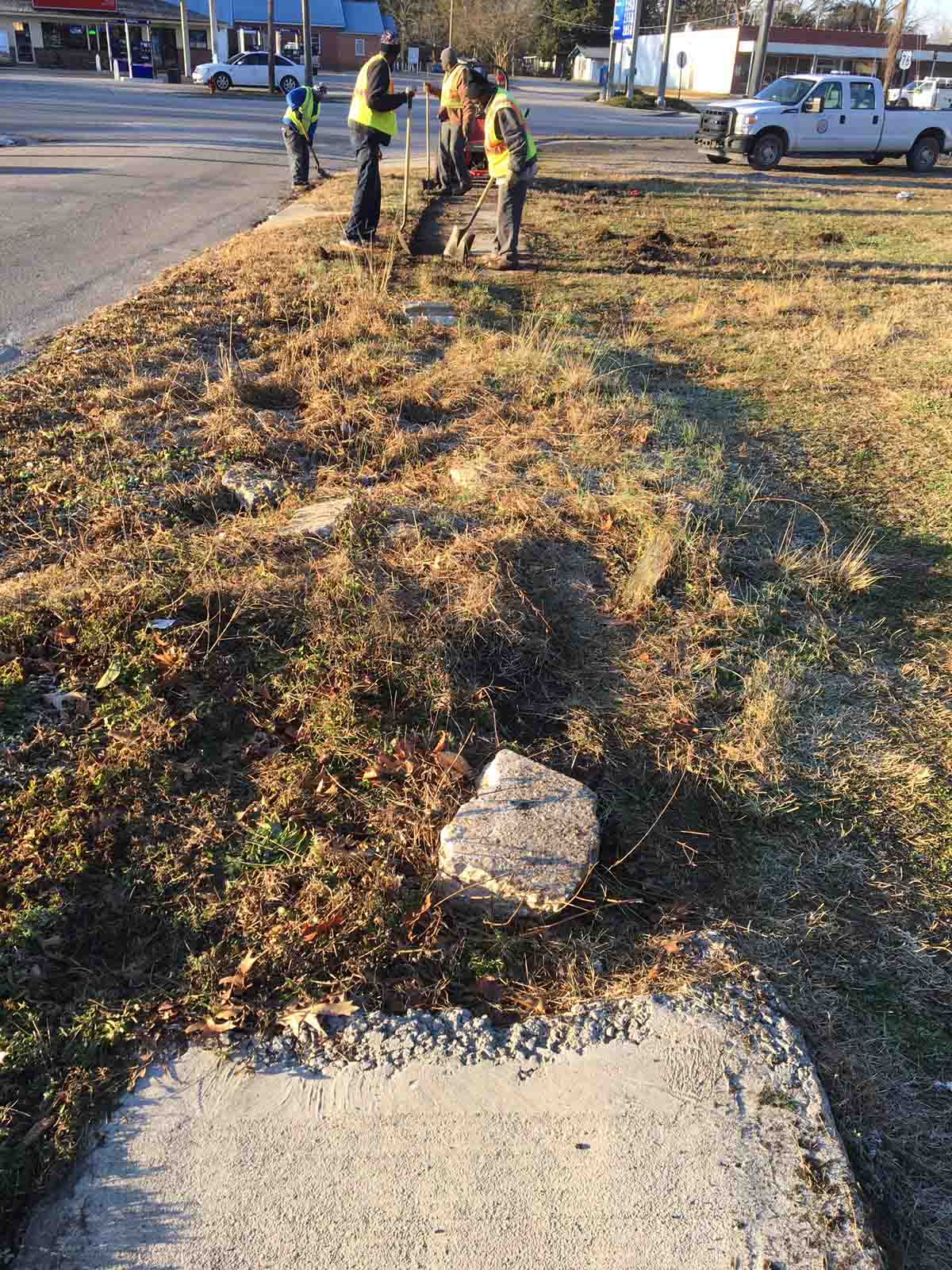While the benefits of well-maintained sidewalks are hard to dispute, sidewalks can also pose legal risks for cities.

The City of Marion's sidewalk improvements started with edging and clearing
vegetation and debris. Photo: Mayor Ashley Brady of Marion.
The first question to ask is, "Does the city own the property in question?" said Heather Ricard, director of the Municipal Association's Risk Management Services.
Most members of the SC Municipal Insurance and Risk Financing Fund have received claims from individuals alleging they suffered some kind of damage as a result of a sidewalk condition, such as a resident who attempts to force a city to compensate him for an injury he received after tripping on a broken sidewalk.
Still, while the state of South Carolina owns most roads and sidewalks, that doesn't mean local governments are free from risk.
"If the city has chosen to voluntarily repair or maintain the road or sidewalk, they may have assumed liability," said Ricard.
"If a resident has reported a defect or condition in the sidewalk to the city, even if the city does not own or maintain the sidewalk, they may have a duty to inform the owner (the state or county) of the condition."
For example, after Hurricane Matthew, several state-owned sidewalks in the City of Marion had buckled. The city wanted them repaired — not only to ensure pedestrians had a place to walk but also to protect the city from lawsuits, too.
"If you've got one that's kicked up high, it's a trip hazard," said Marion Mayor Ashley Brady, who is an insurance agent. "I see that all day long with work."
So the City of Marion keeps the SC Department of Transportation apprised of hazards.
"We have a good relationship with our local S.C. DOT engineer," he said. "We talk weekly with him, and he says, 'I'll get to it,' and they get to it."
SCMIRF suggests cities keep a form letter on file to report poor conditions to the owner of the property and document that any repairs to the property do not impose liability.
The letter should include several pieces of information, including the following:
- A description of the defect or damage, such as a pothole, raised sidewalk, downed tree, overgrown tree, downed sign or whatever the case may be.
- Street names and addresses information about the location of the problem in need of attention from the property owner.
- A statement that describes the property owner's legal responsibility for the maintenance of the problem area and any activities necessary to ensure the public's safety.
- The purpose of the letter. For example, it could say that the purpose is to put the named property owner on notice of the poor condition of the road, sidewalk, right of way or other area.
- The city's intention to seek reimbursement from the property owner for materials, equipment and labor costs, if the property owner asks the city to repair the damage.
- A statement that makes clear the city's assistance was a one-time event. An example: "Please note that after repairs are made, the city does not intend to continue maintenance on this segment of (property owner's) roadway."
- A statement that says the city accepts no liability for the item repaired.
